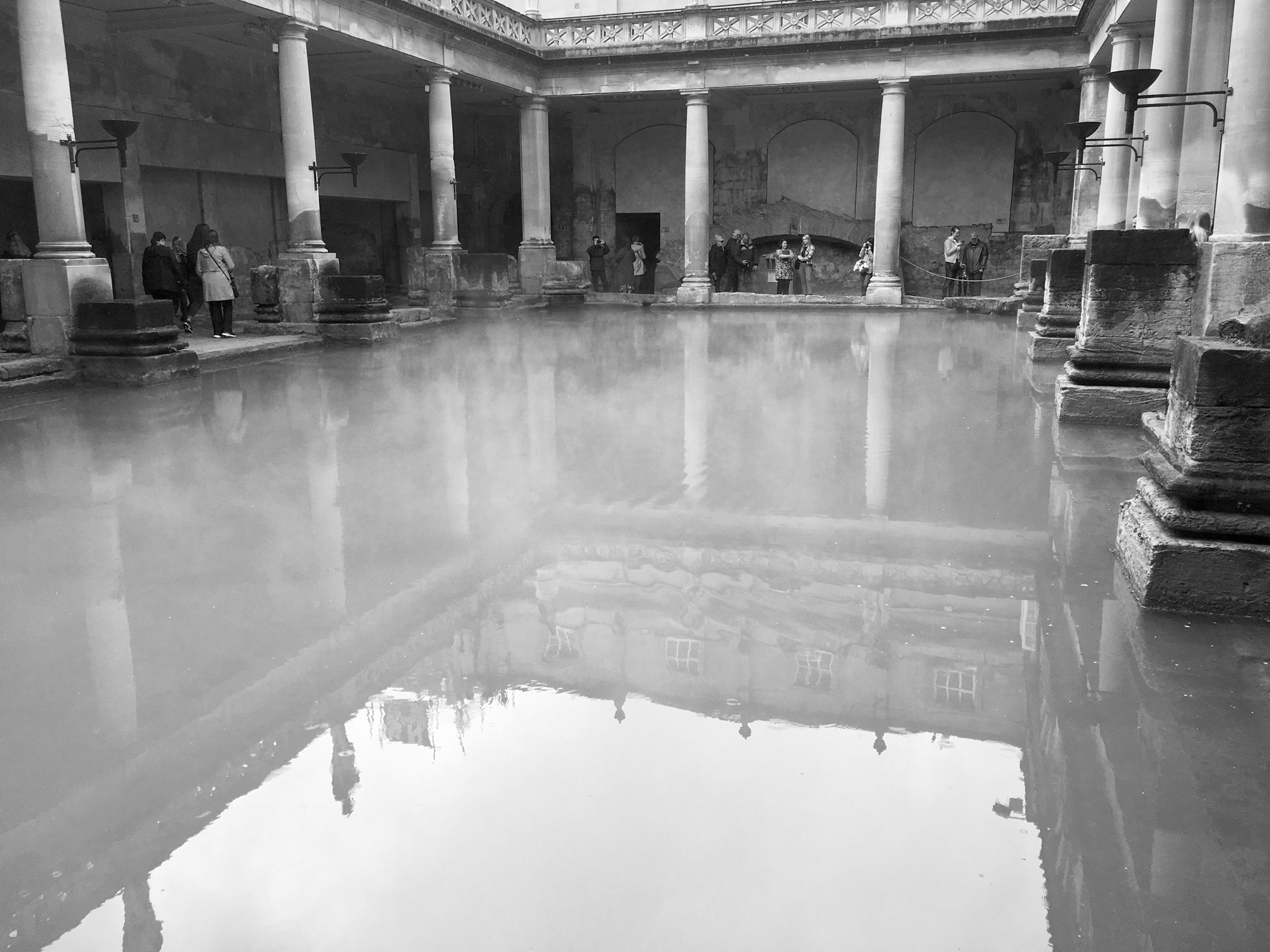
Continuing the series of posts from my new book SPLASH!
From Chapter 3:
The Great Bath at the restored Roman spa at Bath, in England. (Courtesy of author)

Continuing the series of posts from my new book SPLASH!
From Chapter 3:
The Great Bath at the restored Roman spa at Bath, in England. (Courtesy of author)
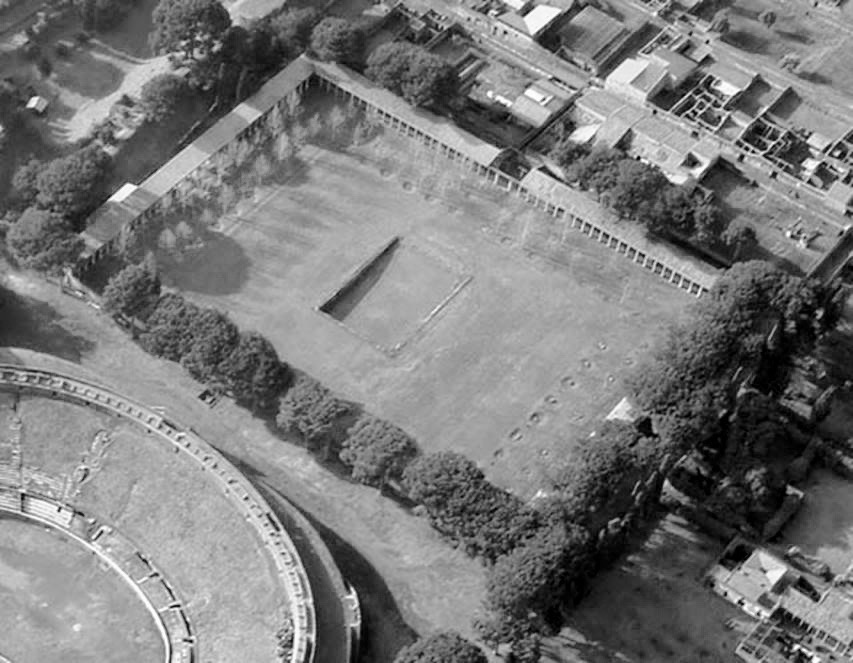
Continuing the series of posts from my new book SPLASH!
From Chapter 3:
The Great Palaestra at the ruins of Pompeii — larger by far than a football field, with an oversized, sloping swimming pool at its center. The overflow from the pool was used to flush the latrines. (Google Earth)
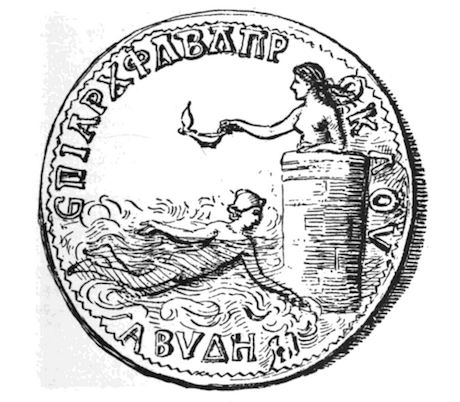
Continuing the series of posts from my new book SPLASH!
From Chapter 2:
A coin from the late 2nd century, depicting Leander swimming the Hellespont to be with his beloved Hero. His last swim did not go well for either party.
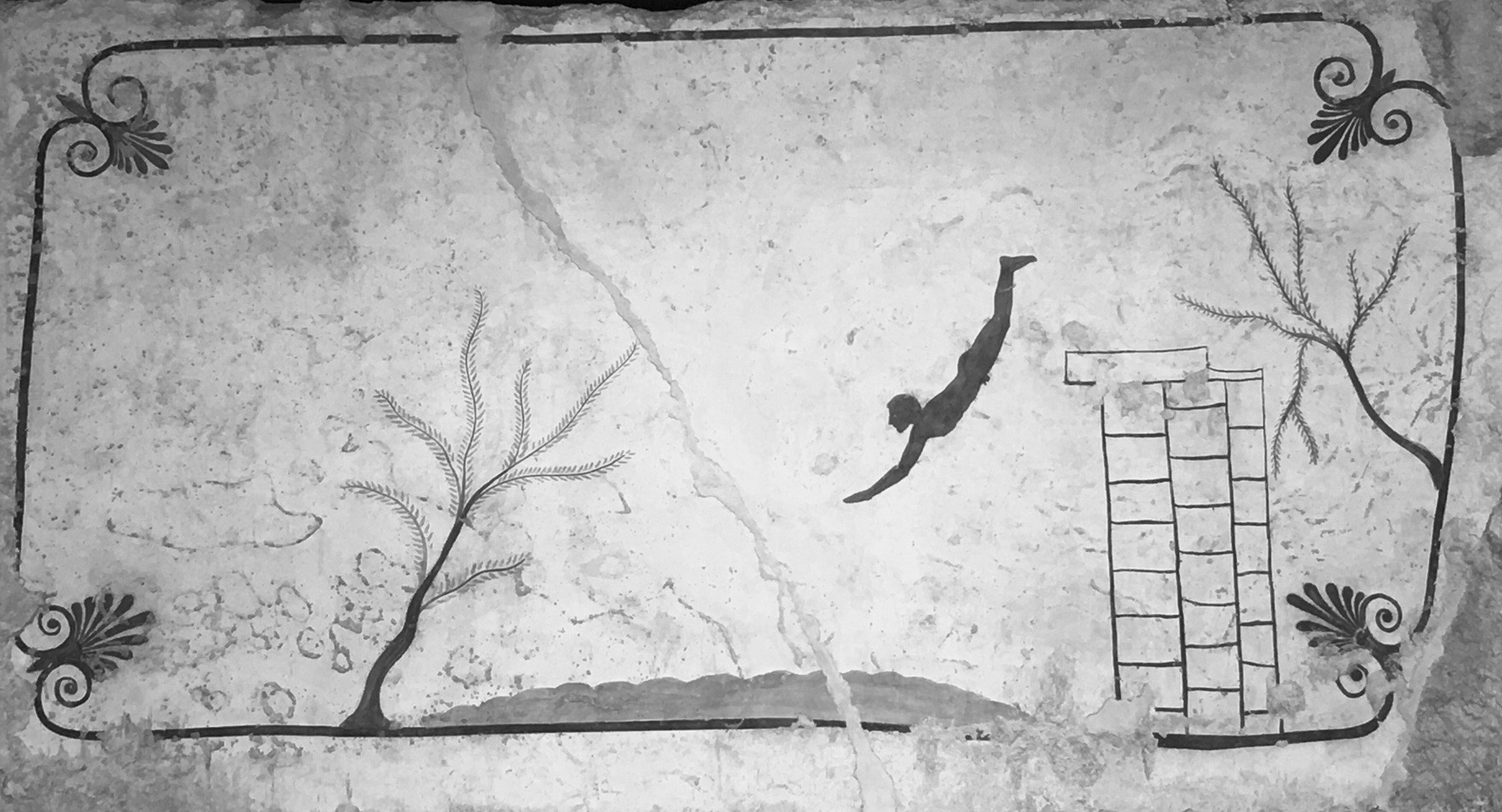
Continuing the series of posts from my new book SPLASH!
This is from Chapter 2, “Swimming’s Golden Age.” The interior of the Tomb of the Diver, circa 470 BCE, discovered at Paestum in the Campania region of Italy. (Credit: courtesy of author.)

Continuing the series of posts from my new book SPLASH!
This is from Chapter 1: “Gods, Humans, and the Aquatic Ape. Proto-swimming? Nine centuries before the Christian Era, Assyrian warriors were using inflated animal bladders to surprise their enemies. (Credit: BibleLandPictures.com / Alamy Stock Photo.)
Please share as inclined on social media.
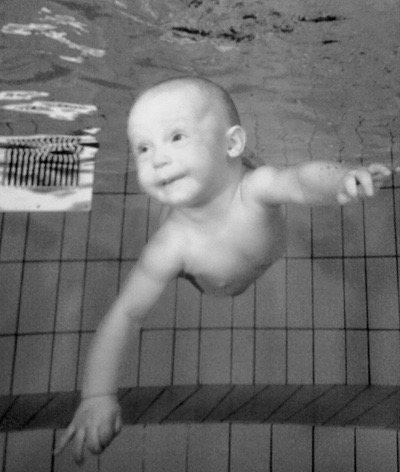
Continuing the series of posts from my new book SPLASH!
This is from Chapter 1, “Gods, Humans, and the Aquatic Ape”:
Up until about age six months, an infant’s windpipe automatically closes underwater, an indication perhaps of our aquatic heritage. (Credit: Affebook, altered to black & white.)
Please share as inclined on social media.
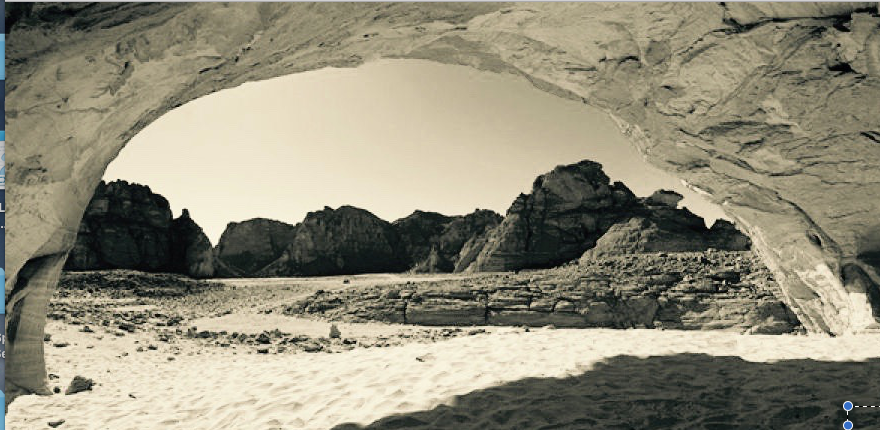
From the Prologue
Once Upon a Time in Egypt
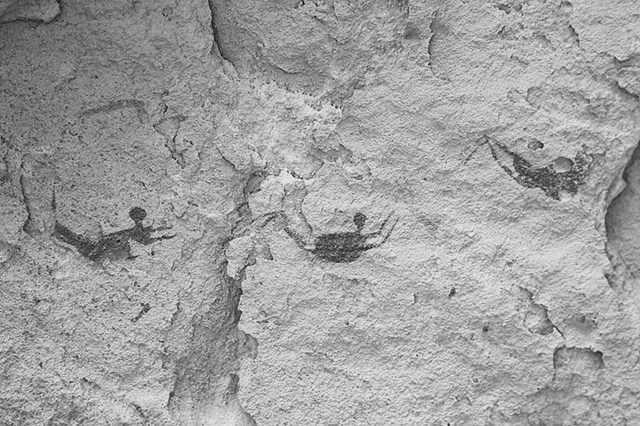
From the Prologue
Once Upon a Time in Egypt
Eight-thousand-year-old pictographs found in the Cave of the Swimmers at Wadi Sura, in the southwest Egyptian desert. (Roland Unger, altered to black & white)
